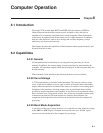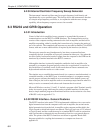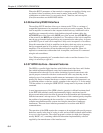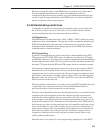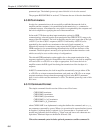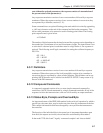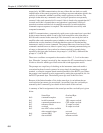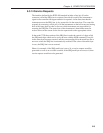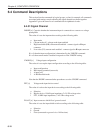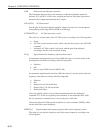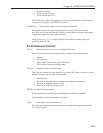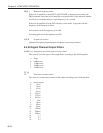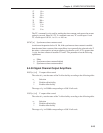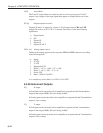
6-9
Chapter 6, COMPUTER OPERATION
6.3.14 Service Requests
The interface defined by the IEEE-488 standard includes a line (pin 10 on the
connector) called the SRQ (service request) line which is used by the instrument to
signal to the controller that urgent attention is required. At the same time that the
instrument asserts the SRQ line, it also asserts bit 6 in the status byte. The controller
responds by executing a serial poll of all the instruments on the bus in turn and testing
bit 6 of the status byte in order to discover which instrument was responsible for
asserting the SRQ line. The status byte of that instrument is then further tested in
order to discover the reason for the service request and to take appropriate action.
In the model 7220 the assertion of the SRQ line is under the control of a byte called
the SRQ mask byte which can be set by the user with the MSK command. If any bit
in the status byte becomes asserted, and the corresponding bit in the mask byte has a
non-zero value, the SRQ line is automatically asserted. If the value of the mask byte
is zero, the SRQ line is never asserted.
Hence, for example, if the SRQ mask byte is set to 16, a service request would be
generated as soon as an overload occurred; if the SRQ mask byte were set to 0, then
service requests would never be generated.



